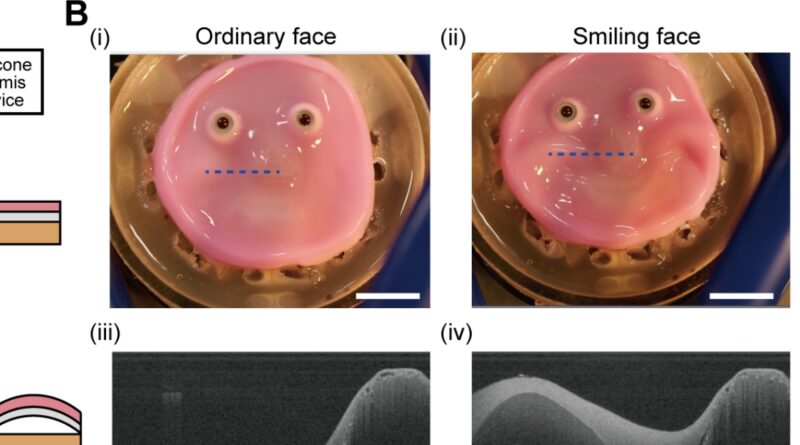Engineered Skin Tissue Successfully Bound to Humanoid Robots
Researchers led by Professor Shoji Takeuchi at the University of Tokyo have developed a method to bind engineered skin tissue to the complex forms of humanoid robots. This advancement could enhance robotic platforms with increased mobility, self-healing abilities, embedded sensing capabilities, and a more lifelike appearance. Inspired by human skin ligaments, the team included special perforations in a robot face to help a layer of skin take hold. This research has potential applications in the cosmetics industry and plastic surgery training.
Takeuchi’s Biohybrid Systems Laboratory, known for its work in biohybrid robotics, created a method using V-shaped perforations and collagen gel to bind skin to robotic structures, allowing for natural flexibility and strong adhesion without tearing. This method improves on previous techniques that used mini anchors or hooks, which were limiting and potentially damaging.
This innovation could lead to robots with self-healing skin that can repair minor lacerations and incorporate sensory capabilities, enhancing environmental awareness and interaction. The research aims to develop thicker, more realistic skin with features like sweat glands and blood vessels and to integrate sophisticated actuators for humanlike expressions and dexterity. This work could also aid medical research in areas such as skin aging, cosmetics, and surgical procedures.
